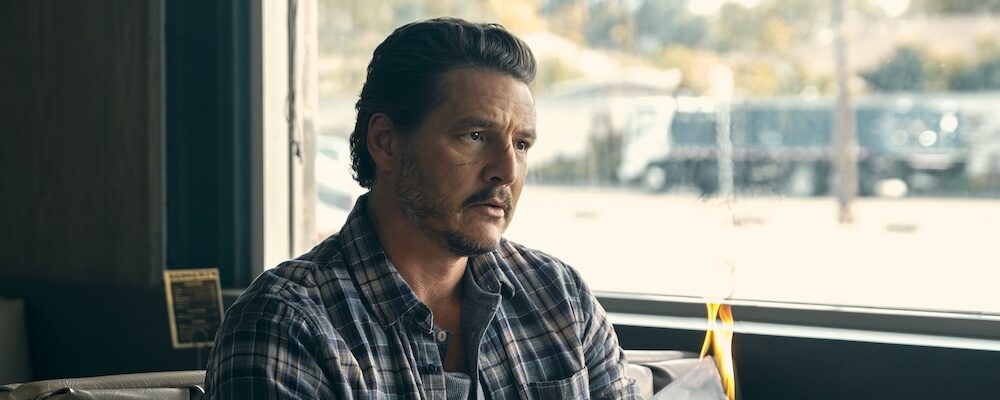Anna Boden and Ryan Fleck’s ‘Freaky Tales’ Is an Ode to Oakland Full of ‘80s Nostalgia and VHS Dreams
Alci Rengifo
We just can’t let go of the past. “Freaky Tales” is another headlong dive into 1980s nostalgia, clearly made by millennials who cherish their childhood memories encased in VHS. Directors Anna Boden and Ryan Fleck can’t help but indulge in making the transitions between this film’s short stories look like worn tapes. You may or may not remember how they used to look when you would rent an overused copy at the local video store. This quirky experiment also doubles as a homage to Oakland, CA, celebrating its community while throwing a big middle finger at fascism. Uneven but certainly entertaining, the film has a midnight charm that holds together its pieces.
The time is 1987 and a mysterious green substance, possibly from outer space, has landed near Oakland. That’s just a side detail, or an excuse for the directors to get surreal with what they describe as a sort of cinematic mixtape. Four stories interlink with their starting point being outside a movie theater playing “The Lost Boys.” In the first tale a virtual commune of East Bay punk rockers spend their time at Gilman, a club that boasts a sign warning, “No Racism. No Sexism. No Homophobia. No Drugs. No Alcohol. No Violence.” This makes them a target for violent local neo-Nazis, who raid the place and beat up some of our heroes. The punks, including Tina (Ji-young Yoo) and Lucid (Jack Champion), prepare to fight back. In the second story, an aspiring rap duo, Danger Zone (played by Dominique Thorne and Normani), take on the misogynist pretensions of big time local rapper Too $hort (DeMario Symba Driver) in an epic rap battle at a local club. The third chapter finds a debt collector named Clint (Pedro Pascal) promising his pregnant wife (Natalia Dominguez) he’s doing one more job, until tragedy strikes. Things get truly surreal in the final story, a bloody grindhouse revenge tale involving real Warriors basketball player Sleepy Floyd (Jay Ellis).
Fleck and Boden’s anthology is an entertaining love letter to Oakland as well as a certain era, but more importantly a certain kind of filmmaking associated with that time period. This is their passion project following the box office success of their MCU outing, “Captain Marvel.” Anyone born in the ‘80s can’t help but think back to their formative years in terms of video culture. B-movie theaters still existed. Like Robert Rodriguez’s “Planet Terror” or Juel Taylor’s “They Cloned Tyrone,” the aesthetic is a major part of the experience. The first chapter nods at films like “The Warriors,” giving it a relevant political spin as the more diverse punks who include Asians, Latinos and Blacks, take on the skinheads. There’s a celebration of solidarity between communities against the darker side of California. Now stereotyped as an ultra-liberal state, it’s easy to forget the strong right-wing presence in many areas.
The other chapters play with different themes while keeping the sociological ones consistent. Danger Zone, made up of scrappy Barbie (Thorne) and Entice (Normani) face the dual hassles of misogyny and racism. Before their big performance with Too $hort, we see them work at an ice cream parlor where a racist detective, The Guy (Ben Mendelsohn) strolls in to be an intimidating jerk gleefully using verbal sexual harassment. It’s a strong short story, linked to the others with the ongoing presence of the mysterious green substance (Danger Zone’s mics start to glow and their flow becomes even more unbeatable), as well as ads for a kind of mindful awareness brand, “Psyotics.” Fact and fiction also commingle, with references to real people and events. The real Too $hort narrates as well, and makes a cameo as The Guy’s detective partner, as if to make a point about the directors’ playfulness with reality.
In terms of performances, the best one belongs to Pedro Pascal as the tragic Clint, a rugged anti-hero hiding genuine humanity under his enforcer exterior. This chapter offers more fun nods at Oakland’s history. Tom Hanks makes a cameo as a man who once worked selling hot dogs at the Oakland Coliseum and is now a video store owner with encyclopedic film knowledge, who offers Clint classic recommendations. The story itself can be a bit cliché with Clint not being able to escape the consequences of his violent life, eventually enduring a great loss. The conclusion of the chapter is a welcome surprise, challenging the audience to make do without a predictable ending that turns out to be more reflective. Clint’s story will then connect indirectly to that of Sleepy Floyd. Here, the directors really mess with history, using a game where Floyd broke records and cemented his place as a basketball legend to spin a grindhouse revenge fantasy.
To call the third chapter grindhouse is no exaggeration. It could have easily been scripted by Quentin Tarantino. It involves the local neo-Nazis, a plot to rob the homes of NBA players and a murder that turns Floyd into a sword-wielding, motorcycle-riding vigilante. Fleck and Boden lose some narrative drive at this point, since they focus more on the action. “Kill Bill” fans will like the gory brawls and slicing. That weird green substance is still around and the movie eventually ends on an energetic note. Despite the constant threat of derailing, “Freaky Tales” is sustained by the genuine love the directors have for what they want to say. The soundtrack isn’t generic needle drops, cinematographer Jac Fitzgerald gets to play with ratios and formats, and the cast is always lively. Nostalgia is on overkill mode in popular culture right now, yet this stylistic retread remembers to punch Nazis and celebrate genuine community.
“Freaky Tales” releases April 4 in theaters nationwide.

